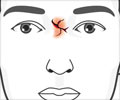As a development that will lay the groundwork for a future of cancer-sniffing artificial noses, Duke University researchers are decoding the way people's noses recognize scents.
As a development that will lay the groundwork for a future of cancer-sniffing artificial noses, Duke University researchers are decoding the way people’s noses recognize scents.
In an experiment, researchers tested hundreds of receptor gene types found in human and mouse noses, reports National Geographic News.Scientists were able to figure out which receptors respond to which odor molecules and translate the smells into brain signals by inundating the receptors with odors.
Unlocking this interface would show how the brain recognizes and reacts to different smells.
"We used many different types of [odorus] chemicals, from strawberries to garlic, and these chemicals have specific structure. [We asked] what kinds of receptors are activated by each?" said study co-author Harumi Saito of Duke University.
"Only three receptor types facilitate all of color vision," said geneticist Joel Mainland of the Duke University Medical Center, whose findings will appear in tomorrow’s issue of the journal Science.
"For human smell you have 400 [receptors], so it becomes a very complex system to decode," the expert added.
Advertisement
Knowing how different receptors recognize odors could help produce artificial noses able to sniff out scents from cancer to bombs.
Advertisement
ARU/S









